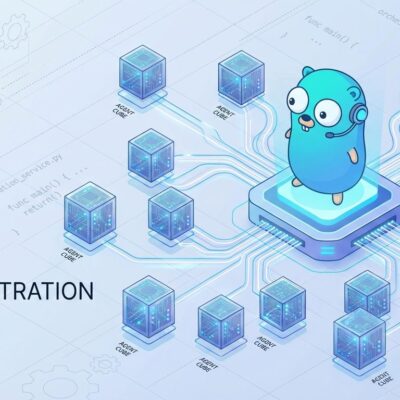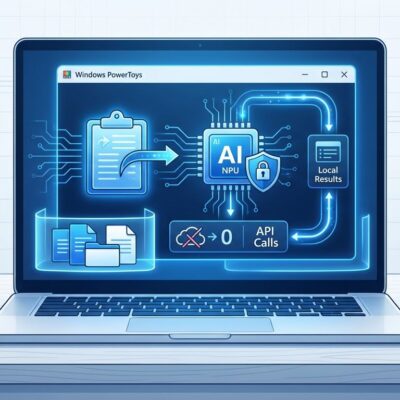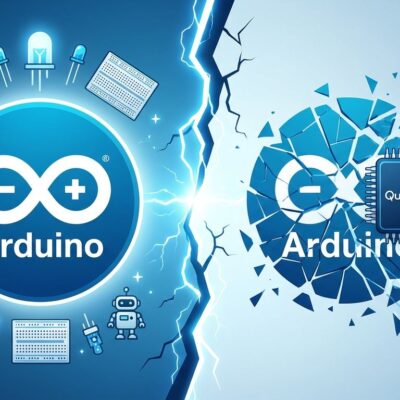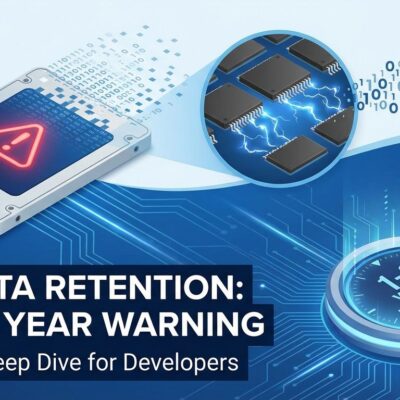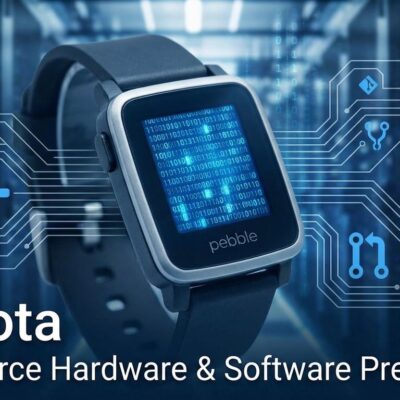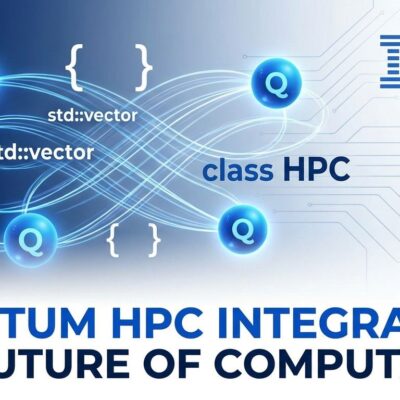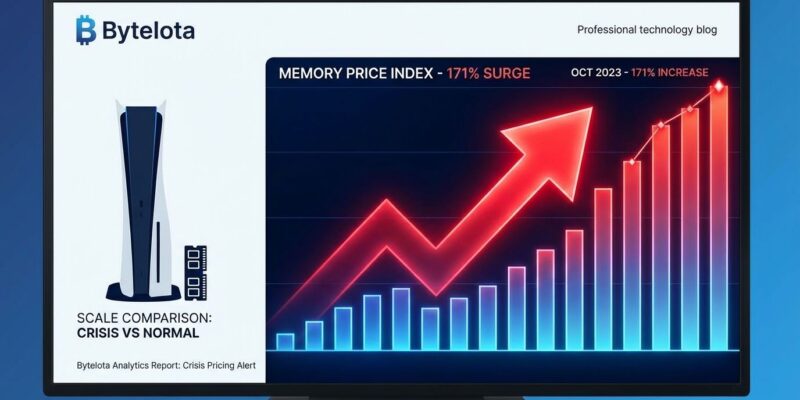
The memory market hit an absurd milestone this November: a PlayStation 5 console ($499) now costs less than a 64GB DDR5 RAM kit ($509+). DRAM prices have surged 171.8% year-over-year—outpacing even gold price increases—as manufacturers reallocate production capacity from consumer memory to high-margin HBM (High Bandwidth Memory) for AI servers. For developers building workstations, upgrading existing systems, or budgeting for team hardware, this isn’t just an inconvenience. It’s a fundamental market restructuring that shows no signs of relief through 2026.
The Price Shock: 171% Surge Beats Gold
The numbers tell a brutal story. DRAM contract prices jumped 171.8% year-over-year as of Q3 2025, surpassing gold’s appreciation rate during the same period. Consumer DDR5 kits have doubled in price within months. A Corsair Vengeance 32GB kit that cost $95 in September now sells for $184—a 94% increase. The 64GB version jumped from $189 in March to $424.99 in November: 124% more expensive in eight months.
High-end kits fared no better. The Corsair Dominator 64GB that cost $309 in September now commands $509. That’s a 65% increase in two months. Meanwhile, Black Friday 2025 offered almost no DDR5 deals—manufacturers aren’t discounting products in severe shortage.
Developers need to act now if planning hardware upgrades. Industry projections show prices rising another 30-50% per quarter through the first half of 2026. Consequently, that workstation memory upgrade that could wait until “later” represents a significantly higher budget impact with each passing month.
AI Memory Demand Cannibalizes Consumer Supply
The root cause is straightforward but devastating: HBM and conventional consumer DDR5 share the same manufacturing fabs and wafer capacity, but HBM consumes more than three times the wafer resources per unit. Memory manufacturers have reallocated production accordingly, chasing multi-billion dollar AI server contracts with NVIDIA, OpenAI, and cloud providers.
Moreover, SK hynix holds 62% of the HBM market and sold out its entire DRAM capacity through 2026. In Q2 2025, 77% of the company’s sales came from HBM and AI memory. Micron’s HBM revenue exploded from nearly zero to double-digit percentage of total revenue in months. Samsung is tripling HBM3E capacity while cutting conventional DRAM production by more than 20%.
The market dynamics are stark. HBM now approaches 30% of total DRAM production in 2025, up from less than 5% in 2023. DDR4 production is dropping from 30% to under 10% by 2026, with Micron ending mainstream DDR4 shipments in early 2026. As one industry analyst put it: “The memory market isn’t correcting—it’s reorganizing.”
Furthermore, this explains why prices won’t drop soon. Manufacturers are choosing profitability over volume. HBM commands significantly higher margins than consumer DDR5, and AI infrastructure demand isn’t slowing—it’s accelerating. Consumer DRAM is now a secondary priority.
Related: Cloud Costs Surge: Memory Up 307%, Prices Rise 2026
Developers Hit Hardest by Workstation Costs
While most coverage focuses on gaming PCs, developers face steeper impacts. Modern development workflows demand significant memory: IDEs like VS Code and JetBrains, Docker containers, local ML models, virtualization through VMs and WSL2, and data processing pipelines. The baseline has shifted from 16GB to 32GB minimum, with 64GB+ becoming standard for ML and data science work.
Indie developers, students, small teams, and budget-conscious startups face tough trade-offs: delay upgrades and accept productivity loss, cut capacity and constrain workflows, or blow budgets with costs 2-3x original plans. Additionally, the community frustration is palpable. A Reddit thread titled “These RAM prices aren’t funny anymore” captured PC builders’ concerns.
Retailers are posting signs: “We can’t display fixed prices—prices change daily.” Japanese retailers are limiting sales due to lack of supply. One developer on XDA put it bluntly: “The DRAM shortage is forcing me to rethink every build I had planned for 2026.” This is ByteIota’s key angle. The “hidden cost of AI” frame resonates: we’re all using ChatGPT, Copilot, and other AI tools daily, but there’s a hidden hardware tax being paid through RAM shortages.
What’s Next: 2026 Outlook and Developer Options
Industry consensus is grim. Silicon Motion CEO Wallace C. Kou stated: “We’re facing [what has] never happened before: HDD, DRAM, HBM, NAND… all in severe shortage in 2026.” Prices are projected to rise 30-50% per quarter through the first half of 2026. Best-case scenario: new fab capacity ramps in late 2026, prices stabilize by year-end.
However, the likely scenario shows shortages persisting through 2026, with gradual easing in 2027. Lead times for 96GB and 128GB modules now exceed 20 weeks. Manufacturers are delaying new DDR5 kit launches from Q4 2025 to 2026. SK hynix has sold out capacity through 2026. There’s no relief coming.
So what can developers do? Buy now if you need RAM—prices are only getting worse. Prioritize 32GB as baseline (48GB ideal for development work). Consider 64GB+ only if budget allows and workflows demand it. Check for retailer purchase limits before ordering; many now cap purchases at 2-4 kits. For those who can’t afford current prices, optimize workflows to reduce memory pressure. Configure Docker memory limits more aggressively. Close unused applications. Profile memory-intensive processes to find leaks. Consider cloud development environments like GitHub Codespaces or Gitpod for memory-heavy tasks—monthly costs may beat hardware upgrade budgets at current prices.
Nevertheless, there are no good alternatives. DDR4 faces similar shortages and production is ending early 2026. Staying on old hardware delays the inevitable. Waiting for prices to drop is wishful thinking. This is a structural market shift, not a temporary spike. The memory market has reorganized around AI profitability, and consumer DRAM is no longer the priority.
Key Takeaways
The DDR5 memory crisis boils down to these realities:
- DRAM prices surged 171% year-over-year; 64GB kits now cost $425-509+ (were $189-309 earlier this year)
- HBM production consumes 3x wafer capacity; manufacturers prioritize AI server contracts over consumer supply
- No relief until mid-2026 at earliest, with significant probability of extending into 2027
- Buy now if you need RAM—prices rising 30-50% per quarter through H1 2026
- Optimize workflows and consider cloud dev environments for memory-intensive tasks if budget-constrained
The AI boom has hidden costs, and RAM budgets are paying the price. For developers, the irony is sharp: building tools powered by AI while being priced out of the memory needed to build them.


